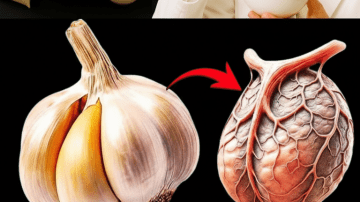A bright, confident smile is invaluable, but the reality of professional whitening treatments—their cost, time commitment, and potential for temporary sensitivity—sends millions searching for faster, cheaper, at-home fixes. The internet is flooded with viral “natural” hacks promising a dazzling smile in just 3 days.

However, many of these highly popular DIY methods rely on corrosive acids and harsh abrasives that pose a serious, often irreversible threat to your tooth enamel—the hard, protective outer layer of your teeth. Enamel, once worn away, cannot regenerate.
It’s time to stop gambling with your oral health. Read on to uncover the definitive dangers of the most popular acidic and abrasive hacks (like Lemon and Charcoal), and learn the only 4 safe, dentist-approved practices you should embrace to achieve a brighter, stronger smile without sacrificing your long-term dental health.
🧪 The Scientific Verdict: Abrasive and Acidic Risks
The efficacy of many DIY hacks is rooted in their ability to strip surface stains quickly. The tragedy is that they strip both the stain and the enamel itself.
1. ⚠️ Corrosive Hacks to AVOID Completely (The Acid Attack)
The following remedies should be avoided or used with extreme caution (and NEVER daily) because they introduce high acidity or dangerous abrasion:
- Lemon and Baking Soda Paste: CRITICAL DANGER. This combines citric acid (which softens enamel) with baking soda (a harsh abrasive). The two chemically and physically destroy the enamel, leading to sensitivity and thinning. Use of this hack should be severely limited (no more than once or twice a month, if at all).
- Apple Cider Vinegar (ACV) Rinse: DANGEROUS if undiluted or used too often. ACV is acidic and can erode enamel. If used, it must be heavily diluted (1 part ACV to 10 parts water) and followed immediately by a plain water rinse.
- Strawberry and Baking Soda Scrub: The malic acid in strawberries softens the enamel, making it vulnerable to the baking soda’s abrasion. This combination should also be avoided or used extremely sparingly.
- Activated Charcoal Powder: High Risk of Abrasion. While porous, charcoal is abrasive and can wear down enamel, which may lead to irreversible thinning and increased sensitivity. It is not approved by the American Dental Association (ADA).

2. 🚨 The Only Ingredient That Safely Whitens (Oxidation)
The only method scientifically proven to change the intrinsic color of the tooth enamel (not just removing surface stains) is oxidation using Peroxide (Carbamide or Hydrogen Peroxide).
- Hydrogen Peroxide (Diluted): This is the active agent in all professional and approved whitening kits. Use only highly diluted 3% Hydrogen Peroxide swished with equal parts water. Do not use high concentrations or swallow the solution.
👑 The Safe Path: 4 Dentist-Approved Habits for a Brighter Smile
True, lasting tooth resilience is built on nutrition, hygiene, and consistency. Forget the abrasive hacks and focus on these four pillars.
Pillar 1: Nourish and Remineralize from Within
- Eat Crunchy Fruits and Vegetables: Apples, carrots, and celery act as natural abrasives and detergents. Their crunchy texture physically scrubs away soft plaque and stimulates saliva (nature’s cleanser and remineralizer).
- Support with Minerals: Ensure your diet is rich in Calcium and Phosphorus (dairy, leafy greens) and Vitamin D (eggs, fatty fish) to support natural enamel repair and strength.
Pillar 2: Master the Oral Microbiome
- Oil Pulling with Coconut Oil: This ancient Ayurvedic ritual uses coconut oil (rich in lauric acid) to physically bind to and remove harmful bacteria, reducing plaque and promoting a healthier oral environment. Swish for 10–15 minutes daily.
- Rinse with Salt Water: Saltwater acts as a natural disinfectant that helps neutralize acidity and soothe gum irritation. Use a rinse once or twice daily.
Pillar 3: Non-Negotiable Hygiene Rules
- Brush with Gentle Tools: Use a soft-bristled toothbrush and a fluoride toothpaste (proven to support remineralization) or a remineralizing paste containing Hydroxyapatite.
- Floss Daily: Flossing removes food particles and plaque buildup between teeth, the primary location of decay and gum disease.
Pillar 4: Protect Against Stains
- Avoid Stain Culprits: Be mindful of dark liquids like coffee, red wine, and black tea.
- The Rinse Hack: Rinse your mouth with water immediately after consuming staining or acidic drinks. Use a straw to minimize contact between the liquid and your enamel.
🌟 Final Thoughts: Consistency is the Real Secret
Achieving a brilliant smile does not require risky, abrasive treatments. It requires consistency, scientific safety, and patience.
Choose fluoride and peroxide (controlled) for whitening. Choose crunchy vegetables and oil pulling for health. Never sacrifice your enamel for a viral, 3-day hack. Your smile is worth the long-term investment.






